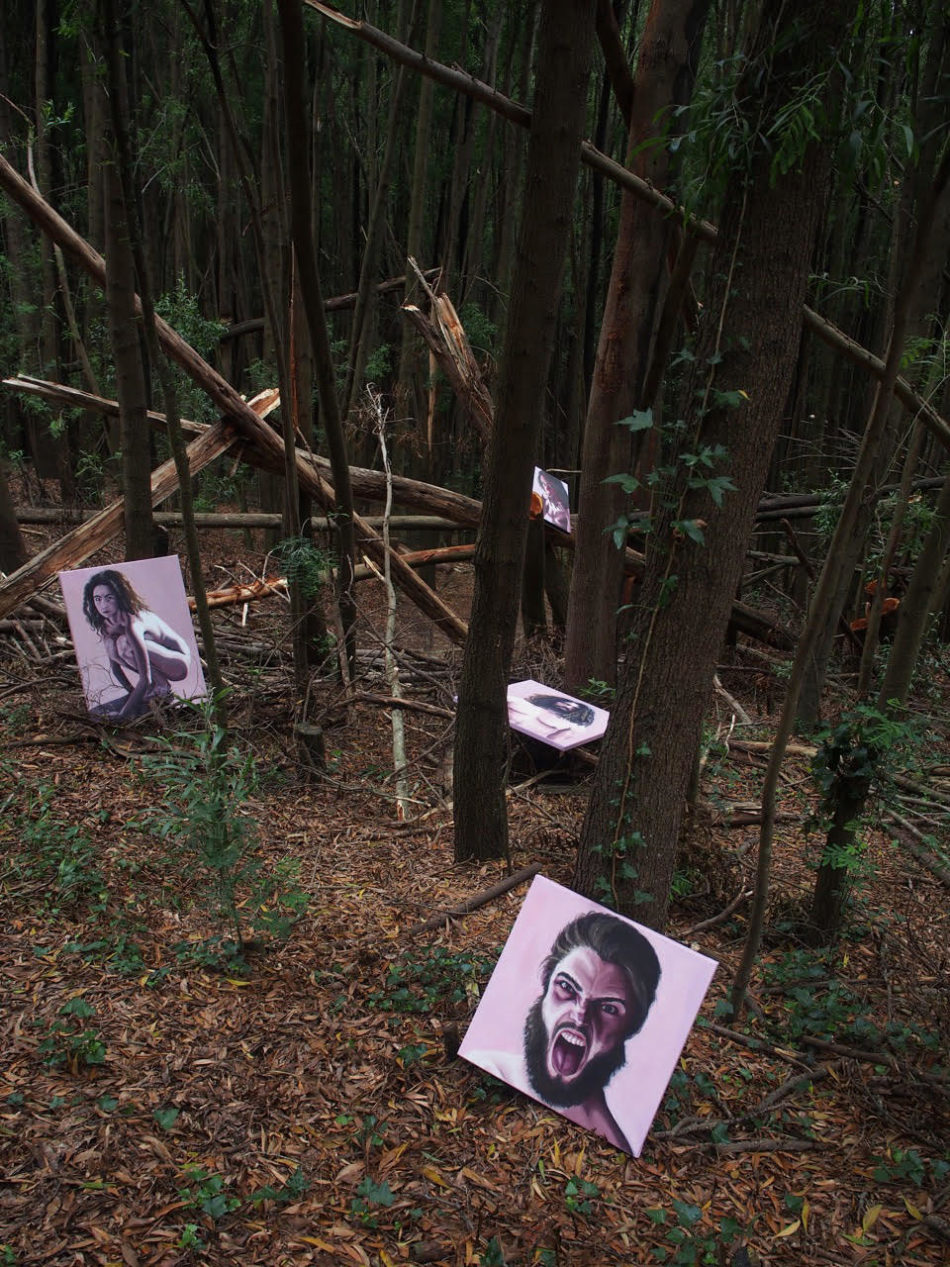MAGAZINE
An overview on Rita Palma's Animals
Some weeks ago, Rita Palma, a Portuguese painter, was featured in an online exhibition based on an onsite residency, where the artist was willing to experiment with new ways of being part of the art world. The final exhibition was supposed to be held in the physical world but due to the unprecedented risks out, there it crossed the phone line and became part of the internet.
Lately, the art world has seen the rise of this kind of event, a forced online migration where Art spaces are embracing the immateriality of the virtual world, whether by creating festivals, exhibitions, or zoom ágoras. As a method of survival, most of these spaces and subsequently their artists are reconsidering the bi-dimensional shape of the screen and thinking of new ways to show and to be present between LEDs.
One of Rita’s series is called “ANIMALS”, a set of paintings of skins, bodies, and faces where humans seem to crave a crack on modern life’s contract. Pale colors contrast with the aggression on the faces and pose they used to get out of their humane shape. Besides the conventionality of the medium, there’s something twisted in the way Rita chose to exhibit these bodies.
On the GlogauAir exhibition page, there’s a window to a forest full of paintings. It’s one of those 360º photo views, where you can move around to find more. After I clicked around a few times I started to think about how interesting it is, to be inside my room inside a computer, inside a forest then inside a painting. Dimensions seem to be surprising themselves. And it’s pretty ironic to be on this exhibition in a forest full of naked bodies but at the same time being freezing cold locked in my room. From the pandemic prism, where, like me, everybody is unable to go outside, I started fantasizing about the time when I could just be out there gathered with nature and warm bodies. Where I could set out my most animal behavior without the fear of getting caught up on the virus’s web. We are lusting for touch, for dance, and for the wildness of just setting everything free without repercussions, and then here we are, stuck in a room, a computer, a forest, and a painting. We can reflect on the conditions of the bodies, that seem to be free but are locked in a painting, as we are locked in a screen. They have this whole promised freedom of being in the wild to explore, but due to their material condition, it’s impossible. Here lies irony. It’s like exploring on Google Earth, having the whole world to go to, but everything around us is frozen in time. Each one of us is inside a canvas, looking at a camera. The 4th wall is broken to be rebuilt on the canvas. It makes me yearn to go back to the WRO 2019 Biennale where the French artist Nicolas Clauss exhibits a piece called “Frames”, where a bunch of videos of humans are projected on boxes. These humans are unpleased with the space they are in, mirroring Rita’s humans that are unpleased with the body they’re stuck in and their social conditions.
After reflecting on the conditions that may have brought Rita to this need of portraying mammals, you click your way to the center, the place where your body should be, and that’s where things get interesting. There’s nobody. You are in a picture of a forest surrounded by bi-dimensional humans and your presence doesn’t exist. Your body is a tripod, and you come to the conclusion that your head may be a camera. In this bubble vision, as Hito Styler puts it, the user is transported to the center of the world but they are disembodied. [1]
“The viewer is absolutely central, but at the same time, he or she is missing from the scene…” [2]
There’s also an isolating effect on the 360º technique which creates a border between the world and the vision. We are in the center of a closed bubble, but as we move, the bubble moves with us, making it impossible to reach its skin. As Rita is working with questions of identity as well, this can be interpreted as a reflection on our generation, the young adults born out of social media, and their way of dealing with individuality. Rita presents us with a figurative approach, aiming to urge raw feelings, inciting our animalistic nature. Using art, she takes a step closer to the freshness and honesty of the world, connecting the fertility of nature to the sterile matter of the computer. In an atypical way, she thinks of our conditions in the reality of the pandemic as exposing our wishes and needs for normality.
[1] Steyerl, Hito. (2018, January 30). Hito Steyerl: Bubble Vision [Video file]. Retrieved from https://www.youtube.com/watch?v=T1Qhy0_PCjs
[2] “Virtual Leonardo’s Submarine”, Hito Steyerl (2020) https://www.estherschipper.com/exhibitions/951-virtual-leonardos-submarine-hito-steyerl/ [Accessed 9 January 2021].



